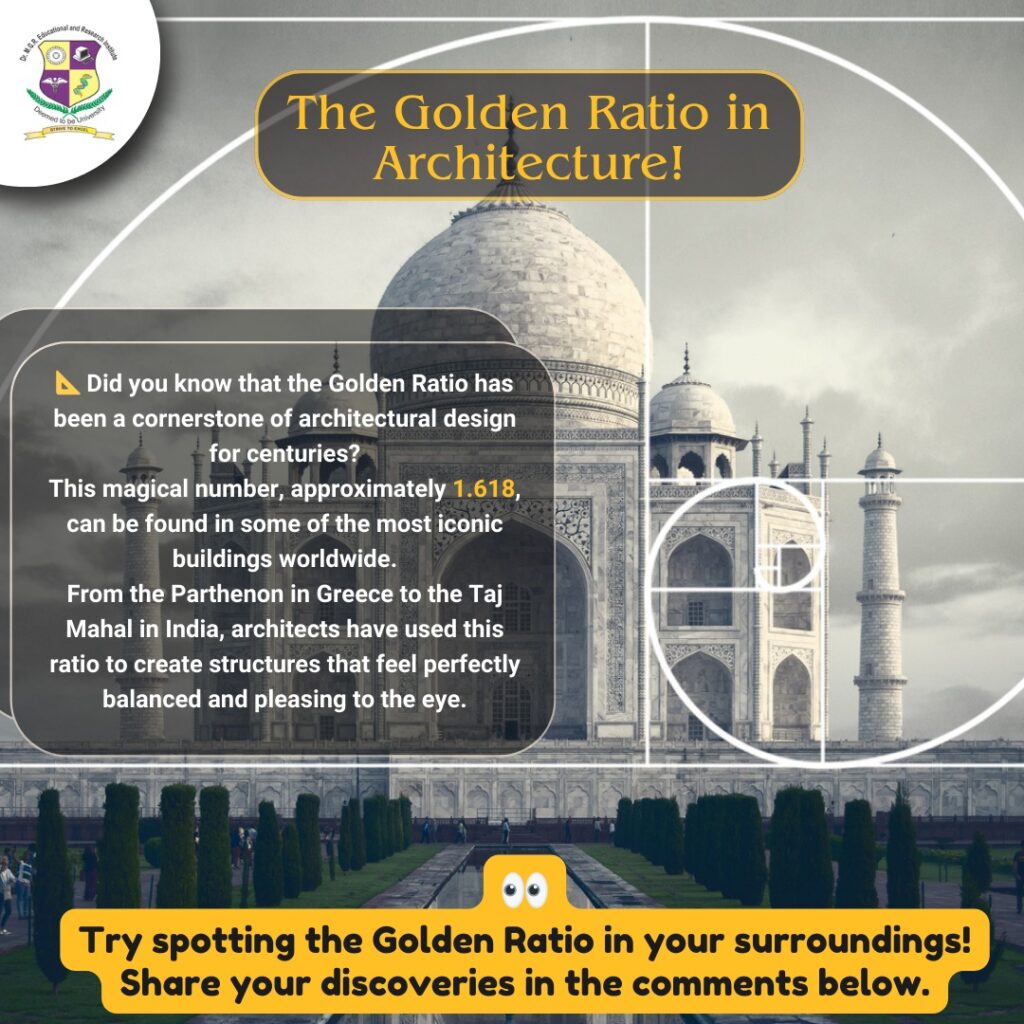
The Golden Ratio (1.618) is a timeless mathematical principle that has influenced art, architecture, and design for centuries. Known as Phi, this ratio creates a sense of balance, proportion, and harmony, making structures appear naturally pleasing to the human eye. Some of the world’s most iconic landmarks owe their beauty to this magical number, including the Taj Mahal in India and the Parthenon in Greece.
The Golden Ratio in Architecture
The Golden Ratio isn’t just a number—it’s a blueprint for perfection. Architects have applied it to everything from the layout of buildings to the positioning of windows and doors. For instance:
- The Taj Mahal: This stunning masterpiece in Agra, India, is believed to follow the Golden Ratio. The proportions of its dome, minarets, and central structure create a flawless symmetry that captivates visitors from all over the world.
- The Parthenon: Built in ancient Greece, the Parthenon reflects the Golden Ratio in its design. Its columns, height, and overall dimensions align beautifully, offering balance and grandeur.
Where to Find the Golden Ratio Today
The Golden Ratio is not just reserved for historic wonders—it’s everywhere! Look closely at modern buildings, furniture, artwork, and even nature. From the spirals of seashells to the petals of flowers, the Golden Ratio shapes the world around us.
A Challenge for You
Now it’s your turn! Take a moment to observe your surroundings—your home, office, or a nearby building. Can you spot examples of the Golden Ratio in architecture, design, or nature? You’ll be surprised how often this ratio appears, creating harmony we subconsciously admire.
Share your discoveries with us in the comments below! Let’s celebrate the beauty of balance and proportion that makes the world—and its architecture—so fascinating.
Stay curious, stay inspired!

